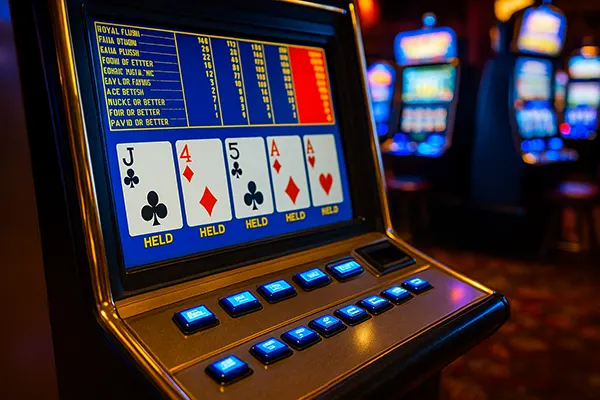
Evaluating Potential Poker Hands Profitability
Poker is a game of strategy, skill, and mathematical calculation. Understanding the potential profitability of a poker hand is crucial for making informed decisions during the game. This article delves into how players can assess the expected value of their poker hands, improve their gameplay, and increase their chances of success. Whether you are a beginner or an experienced player, mastering the art of evaluating hands can significantly impact your long-term results.
Understanding Expected Value (EV) in Poker
Expected Value (EV) is a fundamental concept in poker that helps players determine the long-term profitability of a specific action or hand. EV can be positive, neutral, or negative, guiding players on whether to bet, fold, or call. It is calculated based on probabilities, potential outcomes, and their corresponding payoffs.
EV is not only about raw calculations but also about understanding the implications of your decisions in different game scenarios. For instance, knowing the EV of a bluff or a value bet can give you a decisive edge against opponents who lack this analytical approach. Players who consistently make EV-positive decisions tend to see incremental gains over time, which accumulate into substantial profits in the long run.
How to Calculate Expected Value
To calculate EV, consider all possible outcomes and their probabilities. Multiply each outcome by its respective payoff, then sum these values. For example, in a scenario where a bet costs £10 and the potential win is £50 with a 20% chance, the EV is calculated as follows:
- (0.20 × £50) – (0.80 × £10) = £10 – £8 = +£2
This positive EV indicates a profitable decision in the long run. However, players must also factor in the psychological and situational aspects, such as how opponents might respond to certain actions and the dynamics of the table. These variables can subtly influence the profitability of decisions that are mathematically sound on the surface.
Evaluating the Strength of Your Hand
Hand strength is another key factor in assessing profitability. The relative strength of a hand depends on the stage of the game (pre-flop, flop, turn, or river) and the potential combinations it can form. Recognising hand potential helps players decide their course of action during the game. For example, a suited Ace-King hand has significant potential pre-flop but must be re-evaluated as the board develops.
Strong hands are not always the ones that appear powerful on the surface. Context is crucial, as a modest pair could hold significant value in a tight table environment, whereas it might be weak against aggressive players. Evaluating your hand strength accurately involves understanding your table dynamics and anticipating how other players are likely to act based on their playing styles and positions.
Key Metrics for Hand Strength Evaluation
Metrics such as outs, equity, and implied odds are essential for hand strength evaluation. ‘Outs’ represent the number of cards that can improve your hand. For instance, if you have a four-card flush draw, you have nine outs. Equity refers to your hand’s probability of winning the pot, while implied odds consider the potential winnings from future betting rounds.
Understanding these metrics enables you to make more informed decisions during critical moments in a game. For example, calculating the pot odds against your implied odds can guide whether you should chase a draw. Additionally, being aware of these metrics helps you avoid common pitfalls, such as overestimating the strength of a draw or failing to account for the likelihood of opponents improving their hands.

Incorporating Table Dynamics and Opponent Behaviour
Beyond mathematics, understanding table dynamics and opponent behaviour plays a critical role in evaluating hand profitability. A profitable hand in one game may not be as lucrative in another due to varying player tendencies, bet sizes, and table positions. For instance, a hand like a low pocket pair may be more profitable in a passive table setting than in a highly aggressive one.
Recognising patterns in opponent behaviour—such as their betting habits, tendency to bluff, or reaction to pressure—can provide valuable insights. Adapting your strategy to these patterns allows you to exploit their weaknesses while minimising your own vulnerabilities. This psychological layer of poker is as crucial as the numerical analysis, creating a well-rounded approach to decision-making.
Adjusting Strategy Based on Opponents
Adapting your strategy to exploit opponents’ weaknesses enhances hand profitability. For instance, bluffing against cautious players or slow-playing strong hands against aggressive ones can maximise your potential gains. Timing is critical, as the same strategy can yield varying results depending on the stage of the game and the dynamics at the table.
Ultimately, poker is a game of continuous learning and adaptation. By combining mathematical analysis with observational skills, players can optimise their decision-making process and enhance their overall profitability in poker. The key lies in practice, continuous learning, and adapting to the ever-changing dynamics of the game.
The most popular articles
-
 Video Poker Mini-Tournaments: Approaches, ...
Video Poker Mini-Tournaments: Approaches, ...Video poker in the mini-tournament format has become one of the most …
-
 Poker in Eastern Europe: The Fastest-Growi...
Poker in Eastern Europe: The Fastest-Growi...Online poker has become a defining element of the digital gaming economy …
-
 How LLMs and AI Are Changing Poker: Multi-...
How LLMs and AI Are Changing Poker: Multi-...Poker, a game that has always balanced logic, psychology, and probability, is …
